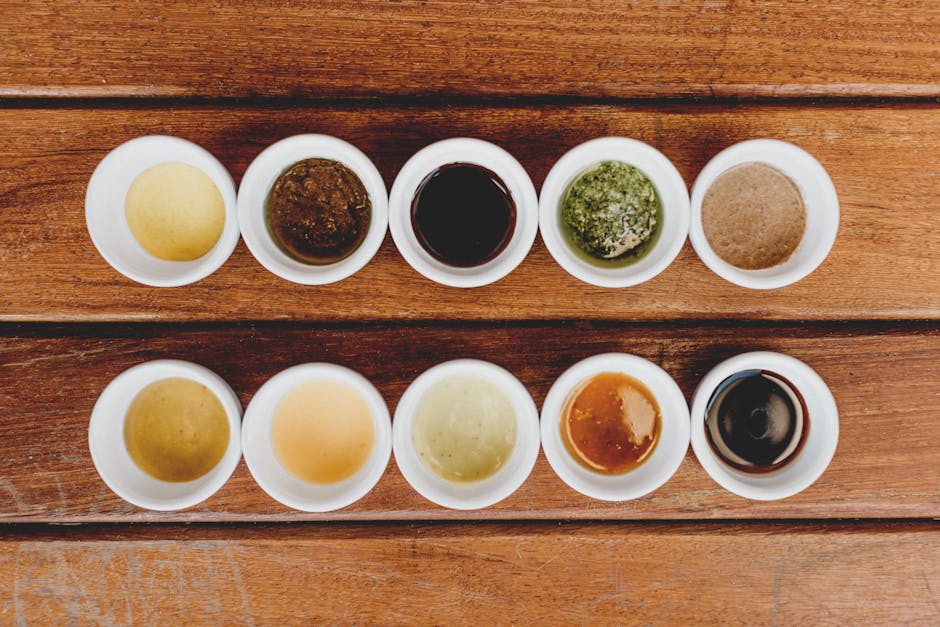Balancing Flavors in Dishes: The Art of Taste Harmony
Imagine taking a bite of a delectable dish that instantly transports you to a realm of culinary bliss. The flavors dance on your taste buds, creating a symphony of sweet, savory, sour, and salty notes that harmonize perfectly. This magical experience is the result of skilled chefs and home cooks who understand the delicate art of balancing flavors in dishes.
From Michelin-starred restaurants to cozy kitchens, achieving the right balance of flavors is essential to creating memorable meals. But what exactly does it mean to balance flavors in dishes? How can we mix and match ingredients to create a harmonious taste profile that delights the senses? In this comprehensive guide, we will delve into the intricacies of flavor balancing, exploring the science, techniques, and creativity behind this culinary art.
The Science Behind Flavor Balancing

Flavor balancing is not just about combining random ingredients; it is rooted in the science of taste perception. Our taste buds can detect five basic tastes sweet, sour, salty, bitter, and umami. Balancing these tastes in a dish is crucial to creating a well-rounded and satisfying flavor profile.
For example, pairing a sweet ingredient like honey with a savory dish can create a delightful contrast that enhances both flavors. Similarly, balancing the acidity of tomatoes with the richness of cheese in a classic pizza contributes to a harmonious taste experience.
Understanding the role of each taste component is key to achieving the perfect balance. Chefs often use a flavor wheel, a tool that categorizes different tastes and aromas, to guide their flavor combinations. By strategically incorporating ingredients that hit different parts of the flavor wheel, chefs can create complex and layered dishes that tantalize the palate.
The Four Elements of Flavor Balancing

When it comes to balancing flavors in dishes, four key elements play a crucial role: sweetness, acidity, saltiness, and bitterness. Let’s explore each of these elements and how they contribute to the overall taste profile of a dish:
Sweetness
Sweetness is a fundamental taste that is universally appealing. It can come from natural sources like fruits, vegetables, and honey, or from added sugars like cane sugar or maple syrup. Sweetness can help balance out spicy or savory flavors in a dish, adding depth and complexity. However, it is essential not to overpower other tastes with excessive sweetness, as it can mask subtler flavors.
Acidity
Acidity adds brightness and freshness to a dish, cutting through richness and balancing out sweetness. Ingredients like citrus fruits, vinegar, and fermented foods introduce acidity into a recipe. By adding a touch of acidity, chefs can enhance the overall flavor profile and create a more dynamic eating experience.
Saltiness
Salt is a powerful flavor enhancer that can amplify the taste of other ingredients in a dish. It helps to balance out sweetness and acidity, while also adding depth and complexity. Chefs often use salt to season dishes and adjust the overall flavor profile. However, it is crucial not to overdo it, as excessive saltiness can overwhelm the palate.
Bitterness
Bitterness is a complex taste that can add depth and sophistication to a dish. Ingredients like dark leafy greens, coffee, and chocolate contribute bitterness to recipes. While bitterness can be challenging to work with, when balanced correctly, it can create a well-rounded flavor profile that is both intriguing and satisfying.
Techniques for Balancing Flavors

Now that we have explored the science behind flavor balancing and the four key elements of taste, let’s delve into some practical techniques that chefs use to create harmonious dishes:
Layering Flavors
One common technique in flavor balancing is layering flavors to create depth and complexity. By building flavors gradually, chefs can create a multidimensional taste experience that evolves with each bite. For example, starting a dish with a base of aromatics like onions, garlic, and herbs can provide a flavorful foundation for other ingredients to shine.
Contrast and Complement
Another essential aspect of flavor balancing is the interplay between contrasting and complementary flavors. Contrasting flavors, like sweet and salty or spicy and creamy, can create a dynamic tension that keeps the palate engaged. On the other hand, complementary flavors, such as pairing a rich protein with a tangy sauce, can work together to enhance each other’s tastes.
Adjusting Seasoning
Seasoning is a critical step in flavor balancing, as it allows chefs to fine-tune the taste of a dish. By tasting and adjusting salt, acid, and sweetness levels throughout the cooking process, chefs can ensure that the flavors are perfectly balanced. Seasoning at the right moment can elevate a dish from good to exceptional.
Texture Contrast
Texture is another element that plays a role in flavor balancing. Combining different textures, such as crunchy, creamy, and chewy, can create a more interesting eating experience. Texture contrast can add depth to a dish and enhance the overall enjoyment of the meal.
Bringing It All Together: A Case Study

To illustrate the concept of flavor balancing in action, let’s look at a classic dish that showcases a harmonious interplay of tastes a traditional Thai green curry. This iconic dish combines spicy, sweet, salty, and creamy elements to create a complex and satisfying flavor profile.
The base of a Thai green curry typically consists of green curry paste, coconut milk, Thai basil, and kaffir lime leaves. The green curry paste provides the spicy kick, while the coconut milk adds creaminess and sweetness. Thai basil and kaffir lime leaves contribute freshness and aroma to the dish.
To balance out the heat of the curry paste, chefs often add a touch of sweetness from palm sugar or honey. The acidity of lime juice or tamarind paste helps cut through the richness of the coconut milk, creating a more balanced flavor profile. Salt is used to season the dish and enhance the overall taste experience.
By carefully layering flavors, contrasting and complementing tastes, and adjusting seasoning levels, chefs can create a Thai green curry that is both vibrant and harmonious. Each bite offers a symphony of flavors that dance on the palate, showcasing the art of flavor balancing at its finest.
Expert Opinions
According to renowned chef Julia Child, “The only real stumbling block is fear of failure. In cooking, you’ve got to have a what-the-hell attitude.” This attitude is essential when it comes to flavor balancing, as experimentation and creativity are key to creating exceptional dishes.
Chef Gordon Ramsay emphasizes the importance of tasting as you cook, stating, “You should taste a dish as you’re making it and you should taste it again just before you serve it.” This hands-on approach allows chefs to adjust flavors on the fly and ensure that the dish is perfectly balanced.
Common Misconceptions
One common misconception about flavor balancing is that it requires expensive or exotic ingredients. In reality, achieving a harmonious taste profile is more about understanding the interplay of flavors and using simple techniques to enhance them. With a basic pantry of staple ingredients, home cooks can create delicious and well-balanced meals.
Conclusion
To wrap things up, balancing flavors in dishes is a multifaceted art that combines science, creativity, and skill. By understanding the role of sweetness, acidity, saltiness, and bitterness, chefs can create dishes that delight the senses and leave a lasting impression. Whether you’re a seasoned cook or a beginner in the kitchen, mastering the art of flavor balancing can elevate your culinary creations to new heights. So go ahead, experiment with different flavor combinations, and embark on a flavorful journey that tantalizes your taste buds.
Remember, the key to exceptional cooking lies in finding the perfect balance of flavors a delicate dance that transforms a simple meal into a culinary masterpiece.




